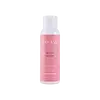What's inside
What's inside
 Key Ingredients
Key Ingredients

No key ingredients
 Benefits
Benefits

 Concerns
Concerns

 Ingredients Side-by-side
Ingredients Side-by-side

Water
Skin ConditioningAlcohol
AntimicrobialPanthenol
Skin ConditioningPolyglyceryl-4 Laurate/Succinate
Glycerin
HumectantPropylene Glycol
HumectantAllantoin
Skin ConditioningHamamelis Virginiana Bark/Leaf/Twig Extract
Skin ConditioningHydrolyzed Silk
HumectantCucumis Sativus Fruit Extract
EmollientHydroxypropyl Oxidized Starch Pg-Trimonium Chloride
HumectantCaramel
Cosmetic ColorantParfum
MaskingLactic Acid
BufferingSodium Hydroxide
BufferingSodium Benzoate
MaskingPotassium Sorbate
PreservativeCI 42090
Cosmetic ColorantWater, Alcohol, Panthenol, Polyglyceryl-4 Laurate/Succinate, Glycerin, Propylene Glycol, Allantoin, Hamamelis Virginiana Bark/Leaf/Twig Extract, Hydrolyzed Silk, Cucumis Sativus Fruit Extract, Hydroxypropyl Oxidized Starch Pg-Trimonium Chloride, Caramel, Parfum, Lactic Acid, Sodium Hydroxide, Sodium Benzoate, Potassium Sorbate, CI 42090
Water
Skin ConditioningHydroxyethyl Urea
HumectantAlcohol
AntimicrobialBetaine
HumectantGlycereth-26
HumectantNiacinamide
SmoothingBiosaccharide Gum-1
HumectantButylene Glycol
HumectantPhenoxyethanol
PreservativeAllantoin
Skin ConditioningDisodium EDTA
Parfum
MaskingTriethylene Glycol
MaskingSodium Hyaluronate
HumectantPropanediol
SolventPentylene Glycol
Skin ConditioningSchizophyllan
HumectantIngredients Explained
These ingredients are found in both products.
Ingredients higher up in an ingredient list are typically present in a larger amount.
Alcohol comes in many different forms. Different types of alcohol will have different effects on skin. This ingredient is usually an astringent alcohol.
These alcohols are drying on the skin. They may strip away your skin's natural oils and even damage your skin barrier. Astringent alcohols may also irritate skin.
Other types of astringent alcohols include:
According to the National Rosacea Society based in the US, you should be mindful of products with these alcohols in the top half of ingredients.
Any type of sanitizing product will have high amounts of alcohol to help kill bacteria and viruses.
Fatty alcohols come from plant oils such as coconut oil. These can help hydrate the skin and are non-irritating. Some fatty alcohols include cetyl and stearyl alcohol.
Learn more about AlcoholAllantoin is a soothing ingredient known for its protective and moisturizingg properties. Because of this, it is often added to products with strong active ingredients.
Studies show higher concentrations of this ingredient can promote wound healing.
Though it can be derived from the comfrey plant, allantoin is produced synthetically for cosmetic products to ensure purity.
Learn more about AllantoinParfum is a catch-all term for an ingredient or more that is used to give a scent to products.
Also called "fragrance", this ingredient can be a blend of hundreds of chemicals or plant oils. This means every product with "fragrance" or "parfum" in the ingredients list is a different mixture.
For instance, Habanolide is a proprietary trade name for a specific aroma chemical. When used as a fragrance ingredient in cosmetics, most aroma chemicals fall under the broad labeling category of “FRAGRANCE” or “PARFUM” according to EU and US regulations.
The term 'parfum' or 'fragrance' is not regulated in many countries. In many cases, it is up to the brand to define this term.
For instance, many brands choose to label themselves as "fragrance-free" because they are not using synthetic fragrances. However, their products may still contain ingredients such as essential oils that are considered a fragrance by INCI standards.
One example is Calendula flower extract. Calendula is an essential oil that still imparts a scent or 'fragrance'.
Depending on the blend, the ingredients in the mixture can cause allergies and sensitivities on the skin. Some ingredients that are known EU allergens include linalool and citronellol.
Parfum can also be used to mask or cover an unpleasant scent.
The bottom line is: not all fragrances/parfum/ingredients are created equally. If you are worried about fragrances, we recommend taking a closer look at an ingredient. And of course, we always recommend speaking with a professional.
Learn more about ParfumWater. It's the most common cosmetic ingredient of all. You'll usually see it at the top of ingredient lists, meaning that it makes up the largest part of the product.
So why is it so popular? Water most often acts as a solvent - this means that it helps dissolve other ingredients into the formulation.
You'll also recognize water as that liquid we all need to stay alive. If you see this, drink a glass of water. Stay hydrated!
Learn more about Water